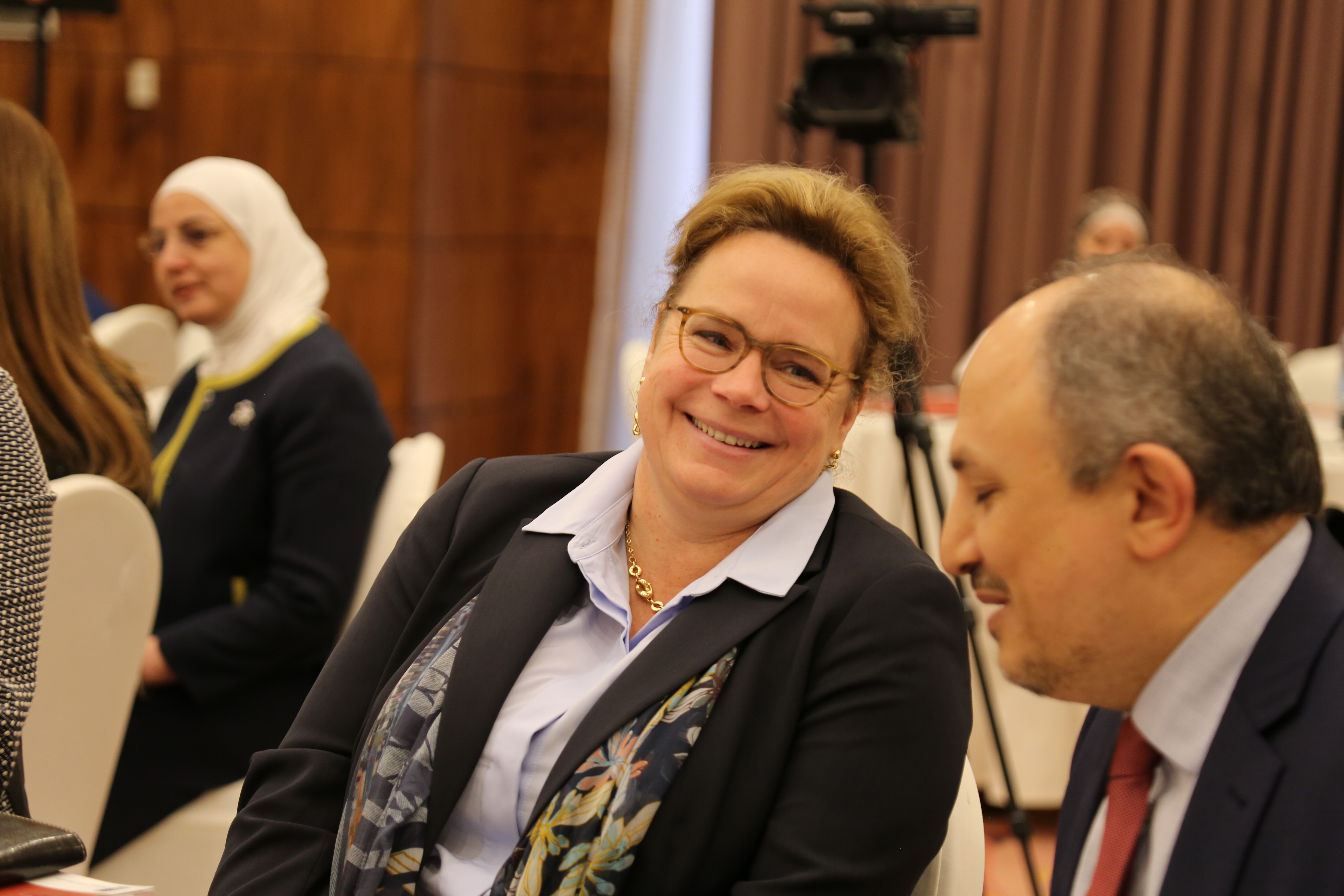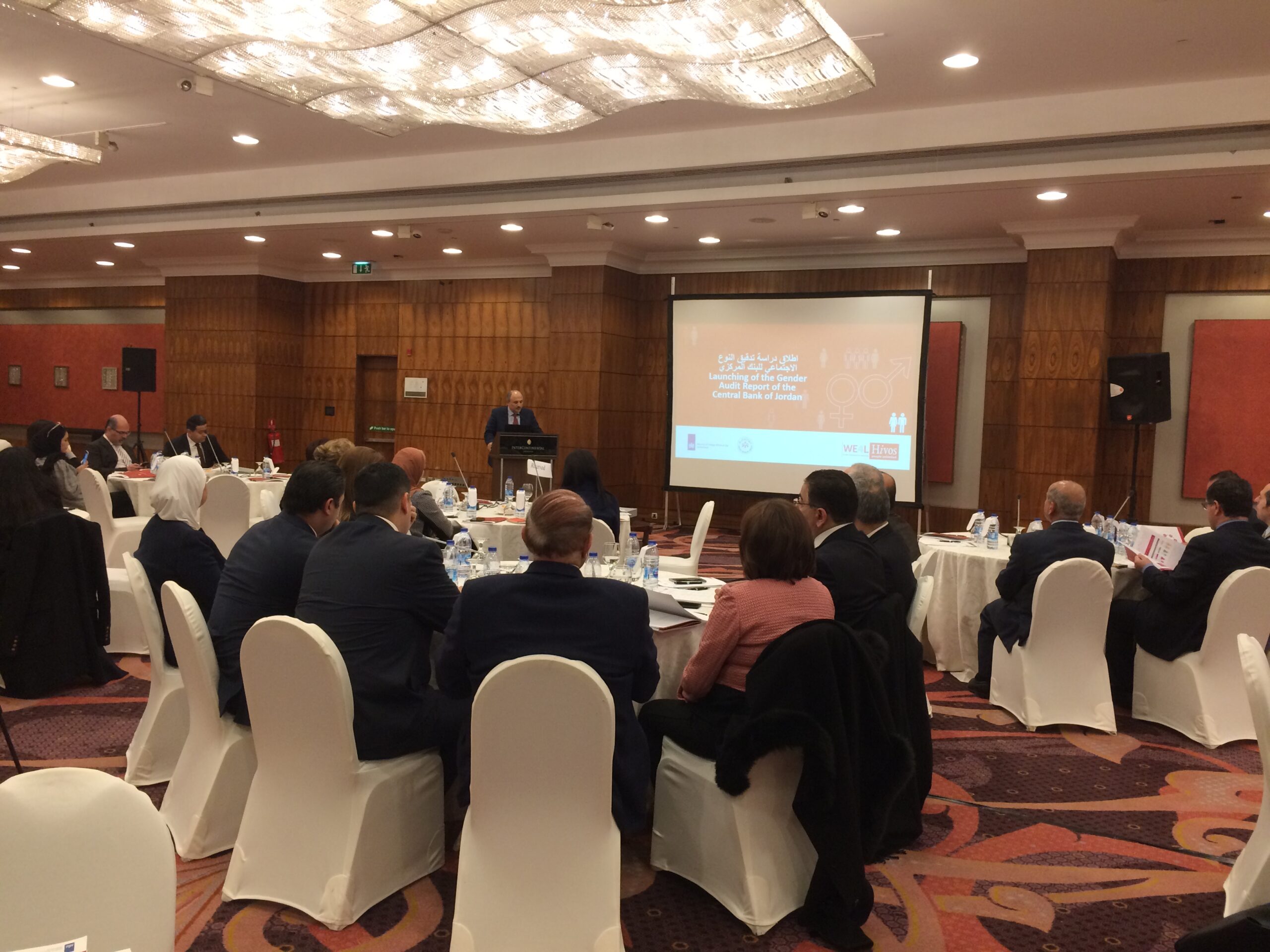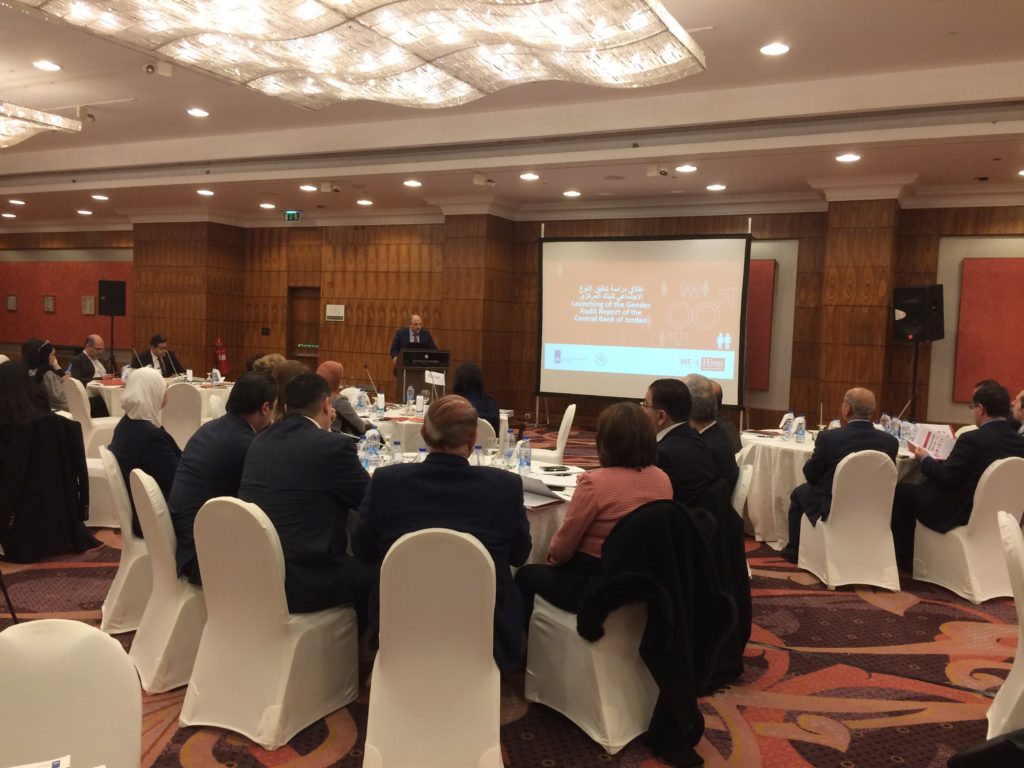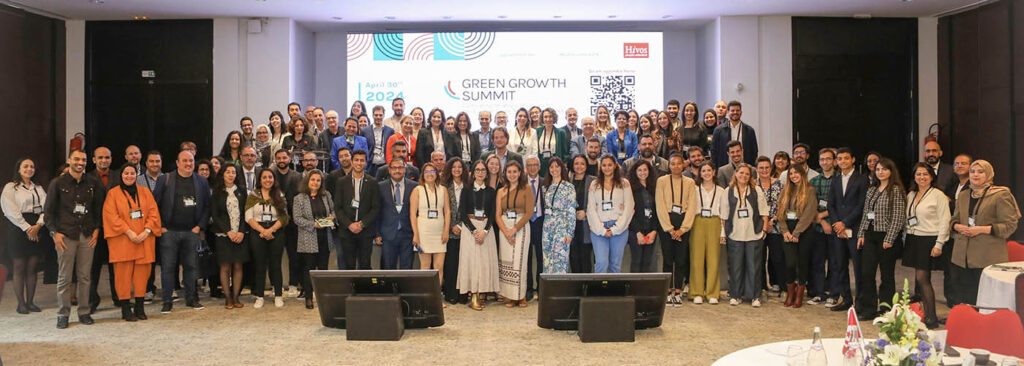id=”580″ id=”post-1570″ class=”wp-post-content-block ” itemscope itemtype=”http://schema.org/BlogPosting” itemprop=”blogPost”>
Gender Audit of the Central Bank of Jordan; a pioneering experience in the MENA region
By Shara Jazzar
2018 was a distinctive year for the Central Bank of Jordan (CBJ) as during that period, a Participatory Gender Audit (PGA) was conducted by Hivos within the framework of the Women Empowered for Leadership (WE4L) program and with the support of the Ministry of Foreign Affairs of the Netherlands. The importance of this PGA is that for the first time, such audit is performed at a central bank in the whole MENA region. Its results were launched during an event that gathered all parties involved – The CBJ Deputy Governor, the Netherlands Ambassador, Hivos Representative, the Researcher, as well as representatives of Civil Society Organizations – on 24 of January, 2019 in Amman.

Sometimes, the findings of a PGA may reveal that a lot of hard work and investment need to be done in order to reach a decent level of female participation in an organization. However, this is not the case for the CBJ. With females constituting 51% of the total number of its employees, the CBJ was serious when it claimed to have “adopted policies over the past years that do not discriminate between men and women in regards to their workers’ rights,” as stated by Ziyad Fariz, Governor of the CBJ. This is clearly stemming from the Bank’s wise belief in the “importance of eradicating gender discrimination because this would help the CBJ reach its goals such as promote economic growth, as well as properly use women’s capacities and qualifications, which are considered an asset,” clarified Fariz.
The audit as such – based on a participatory approach and conducted by the means of literature review, a preparatory workshop, a questionnaire, interviews and focus groups – found that the more experienced an employee is, the least discriminative he is towards females in terms of belief in their work efficiency and their capacity to be in managerial positions. In other words, the more an individual works with women, the more he is exposed to their competencies and professionalism, thus able to acknowledge their capacities and support gender equality in the workplace. However, the female participation in leadership positions at the CBJ remains 33%, which is a bit lower than it should be given that women constitute half of the employees. Nevertheless, this is partly due to the early retirement age of women set by the Jordanian law – 55 years old as opposed to 60 for men – and the fact that females often choose their families over their careers on account of the prevalent culture or social pressure. Therefore, the mentioned percentage has nothing to do with the CBJ’s internal policies, which fully support women in leadership positions. In that regard, Vice Governor Maher Al-Sheikh Hassan highlighted that the CBJ “is committed to creating a comfortable working environment for women and has zero tolerance for any type of harassment or discrimination.” He also pointed out that a “CBJ policy allows employees to work from home during the weekends on specific projects – instead of staying overtime – in return for a bonus.” This clearly encourages women to take on more projects while maintaining a good family-work balance.

For Barbara Joziasse, the Netherlands Ambassador, the results of the study were impressive. They even prompted her to wish that “Hivos could do the same audit in the Netherlands.” She also tackled an interesting point – common between the Netherlands and Jordan – which is that both countries are “champions in flexible work and part-time jobs for women.” In her view, this could be a reason why the percentage of women in leadership positions is lower than that of men as one requires “to train” through a full-time job for that sake.
As for the challenges that faced conducting the PGA, it is worth noting that “such audit is usually based on four pillars that are policies, strategies, programs and perspectives of women role in leadership positions,” as explained by Hivos Representative in Jordan. Given the sensitive nature of the institution and the confidentiality of many of the documents shared with the researchers, the PGA was mainly limited to perspectives of women role in leadership positions. Moreover, time was a factor that played against the auditors. On account of their work-load, employees had a limited amount of time to spend on filling the questionnaire or on interviews and focus groups. Nonetheless, the findings were satisfactory and clearly reflected the employees’ views on gender equality in the work space.
On another note, the CBJ was not only very helpful during the PGA, it also participated in coming out with a list of recommendations and means to apply them. For instance, the paternity leave of employees was raised from two days to one week, based on the results of the audit. Also, the administration is currently trying to solve the transportation issue, which affects both male and females employees. In addition, a female employee – mother of two – was appointed in order to find the best option to create a decent nursery for the CBJ’s staff that will enable women to have their children nearby as well as breastfeed them. Moreover, the Human Resources Department vowed to create a gender unit, which duties would be to follow up on the implementation of the recommendations.
Finally, it is worth pointing out that the mere acceptance of undergoing this PGA by an institution such as the CBJ clearly indicates to which extent this organization cares about gender equality and has nothing to hide in that regard. In that framework, we hope that in the near future other banks and both public and private institutions in Jordan and the region will undertake this exercise, which will benefit both women and society and enable females to have a bigger impact in the public life.
To view a video about the Central Bank of Jordan Gender Audit, click on the following link: https://youtu.be/0Py3SIybNHw





